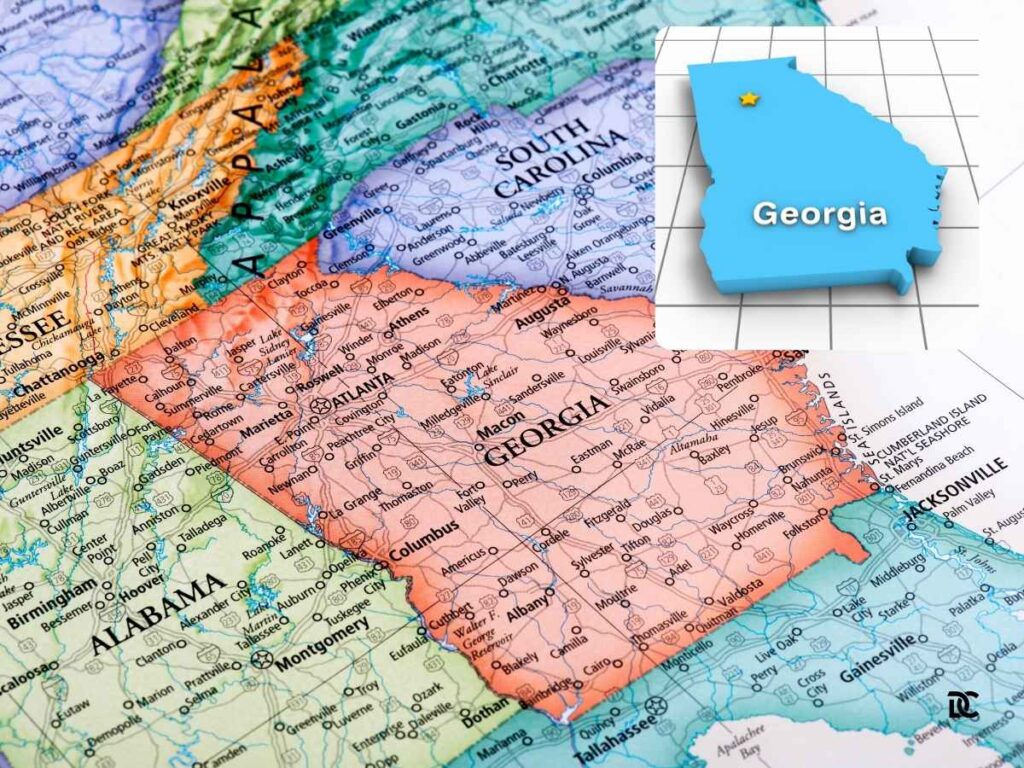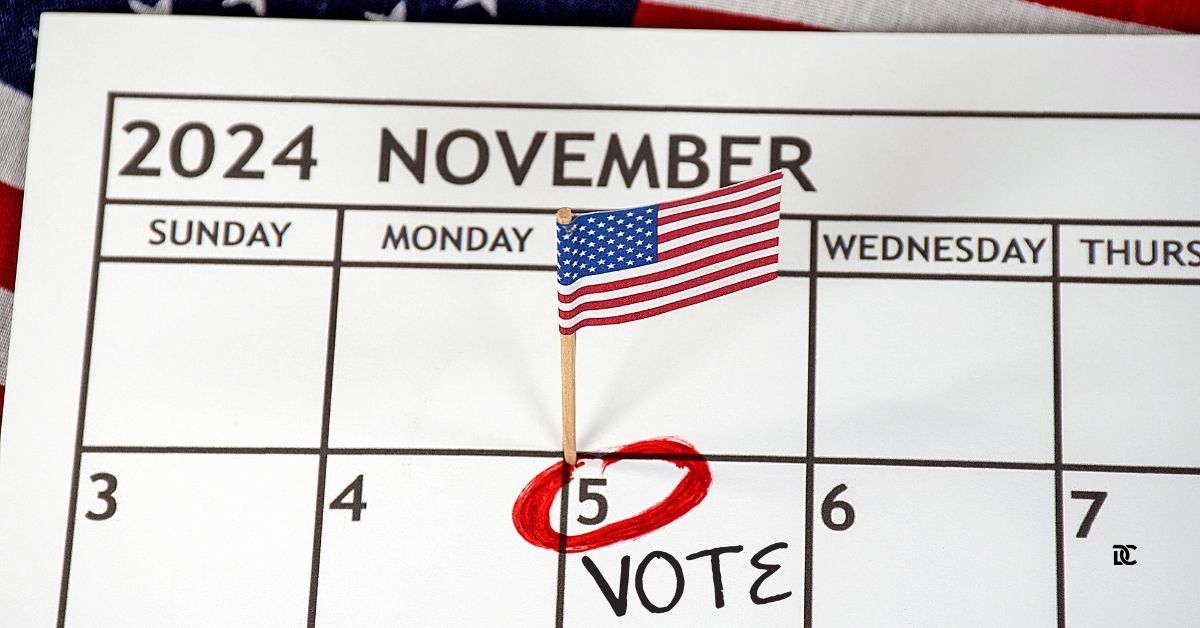Election Day is set for Tuesday, November 5, 2024,—a day that carries the weight of the nation’s future as millions of Americans head to the polls. This year’s presidential race is particularly momentous, featuring a high-stakes contest between Democratic candidate Vice President Kamala Harris and her Republican challenger, former President Donald Trump. The outcome will determine who becomes the 47th President of the United States, intensifying the public’s eagerness to know the results as soon as possible.
However, casting ballots on Election Day doesn’t guarantee immediate knowledge of the winner. The evolving landscape of voting—especially with the surge in mail-in ballots—means that the timeline for announcing winners has extended beyond the traditional confines of election night. Let’s explore why this shift is occurring and what it means for voters anxious to learn the outcome of this pivotal election.
The 2024 election is a critical moment in American history. Vice President Kamala Harris seeks to make history as the first female President, representing continuity and progress from the current administration. Former President Donald Trump aims for a political comeback, rallying his base with promises to revisit and revise policies from his previous term.
The nation is deeply invested in the outcome, with issues like the economy, healthcare, climate change, and social justice at the forefront of voters’ minds. This high level of engagement means that the demand for timely results is more intense than ever. However, patience is required to ensure that every vote is counted and the election’s integrity is maintained.
Also Read
Factors Affecting the Timing of Results
Two primary factors influence when we know the election winners:
- Closeness of the Race: Tight races require counting every last ballot, including late-arriving mail-in and provisional ballots.
- State Counting Procedures: Each state has its own laws regarding when and how ballots are counted, affecting the speed of the tally.
The Changing Landscape of Voting
Over the past few years, there’s been a significant shift in how Americans vote. An increasing number of people are opting for mail-in ballots, a trend accelerated by factors like convenience and, more recently, public health concerns. Mail-in voting offers accessibility but introduces complexities to the counting process.
Unlike in-person votes, mail-in ballots require additional steps:
- Verification: Election officials must verify signatures and eligibility.
- Opening and Sorting: Ballots need to be opened, sorted, and prepared for counting.
- Error Resolution: If there’s an issue with a ballot, officials may need to contact the voter for correction.
These steps are crucial for ensuring the integrity of the election but inherently slow down the process.
Why Election Night Results Are Less Likely
In past elections, media outlets often projected winners based on partial results and exit polls. However, with the rise of mail-in voting, early returns may not accurately reflect the final outcome. For instance:
- 2020 Presidential Election: It wasn’t until the Saturday after Election Day that major networks projected the winner.
- 2022 Midterm Elections: Control of the Senate was projected four days after Election Day, and the House took even longer.
This shift means that immediate results on Election Night are becoming a rarity, especially in closely contested races.
Understanding Vote Mirages
A “vote mirage” occurs when early returns give a misleading impression of the final outcome. For example:
- Red Mirage: Initial results show a Republican lead due to the early counting of in-person votes.
- Blue Shift: As mail-in ballots (which may lean Democratic) are counted, the results shift.
Being aware of this phenomenon helps set realistic expectations and reduces confusion or claims of irregularities.
State-by-State Breakdown
Here’s a look at how different states handle their vote counting based on past elections and current procedures.
Arizona

Arizona demonstrated a relatively swift counting process in the 2022 midterms, reporting 71% of its vote within 24 hours of 6 p.m. ET on Election Day, according to polling aggregator FiveThirtyEight. Polls close at 9 p.m. ET in the state, with results beginning to flow in shortly thereafter. Early and absentee ballots received before Election Day are typically processed quickly, while those received on Election Day or later may take an additional 10 to 13 days to finalize.
Georgia

Georgia is renowned for its efficient vote-counting procedures. In the 2022 midterms, the state reported 100% of its vote within 24 hours of 6 p.m. ET on Election Day. Early and absentee votes received by 8 p.m. ET are promptly tallied, with Election Day votes reported between 8 p.m. and midnight ET. Mail-in ballots cast after Election Day are completed by the following Wednesday evening, ensuring a comprehensive count within a tight timeframe.
Michigan

Michigan showcased impressive speed in counting votes, with 98% of the vote reported within 24 hours in 2022. New laws allowing early processing of absentee ballots may further enhance this efficiency, though adoption varies by county. Polls close at 8 p.m. ET in most areas, with some parts of the Upper Peninsula extending closing times to 9 p.m. ET, accommodating the diverse demographics and geographic spread of the state.
Nevada

In Nevada, the vote-counting process took a bit longer, with 82% of votes reported within 24 hours of 6 p.m. ET on Election Day in 2022. Polls close at 10 p.m. ET, and results start to trickle in shortly after. While a substantial portion of votes is counted promptly, mail-in ballots may extend the final count by several days, depending on the volume and complexity of the ballots received.
North Carolina

North Carolina has a reputation for rapid result announcements. During the 2022 midterms, the state counted 98% of its votes within 24 hours of 6 p.m. ET on Election Day. Early and absentee votes are reported by 9:30 p.m. ET, with Election Day votes processed until 1 a.m. ET the following day. Additional votes, including those affected by external factors like Hurricane Helene, are counted over the next 10 days, ensuring all ballots are accurately tallied.
Pennsylvania

Pennsylvania’s vote-counting process is thorough yet efficient, with approximately 97% of votes reported by 6 p.m. ET the day after Election Day in 2022. The state mandates that once mail-in ballots begin to be processed, the count cannot be halted, ensuring every valid vote is included. Polls close at 8 p.m. ET, and the state works diligently to finalize results within a reasonable timeframe.
Wisconsin

Wisconsin employs stringent regulations regarding absentee ballots, requiring them to be processed only on Election Day. In 2022, this approach facilitated the counting of 98% of votes by 6 p.m. ET the day after Election Day. Polls close at 9 p.m. ET, and despite the strict processing rules, the majority of votes are counted promptly, minimizing delays.
Florida

Florida stands out for its exceptionally swift vote-counting procedures. In the 2022 general election, the state reported 100% of votes by 6 p.m. ET the day after Election Day. Early votes and mail-in ballots cast during the early voting period are processed within 30 minutes of polls closing, typically at 7 p.m. ET in most areas and 8 p.m. ET in the panhandle. These early votes constitute the majority of the total vote, with Election Day votes being reported in 45-minute increments until all are counted.
California

In stark contrast, California’s vote-counting process is notably more protracted. In the 2022 general election, only 50% of the vote was reported by 6 p.m. ET the day after Election Day. This delay is primarily due to California’s policy allowing mail-in ballots to arrive as late as November 12, provided they are postmarked by Election Day. Counties have until December 5 to complete their counts, although most are able to finalize results within two weeks. Polls in California close at 11 p.m. ET, with the extended counting period ensuring that all valid ballots are accurately included in the final tally.
Alaska

Alaska adds another layer of complexity to the vote-counting timeline with its ranked-choice voting system. Polls close at midnight ET in most areas and 1 a.m. ET in the Aleutian Islands. The state Division of Elections anticipates initial results around 1 a.m. ET, with updates every 30 to 40 minutes until about 3 a.m. ET. Final results, particularly in races requiring ranked-choice tabulations, won’t be available until November 20, reflecting the intricate process of ensuring every voter’s preferences are accurately represented.
Other States
Beyond the major swing states, other states exhibit a wide range of vote-counting timelines, each influenced by their unique electoral processes and the volume of mail-in ballots.
- Alabama and Arkansas: These states typically count all votes by Election Night, providing swift results.
- Colorado: Counting may extend until the Friday or Monday after Election Day, depending on the volume and processing efficiency.
- Connecticut and Maine: Most votes are expected to be counted by Election Night, with a few exceptions extending into the early hours.
- Delaware: Results are generally available by midnight ET.
- Hawaii: Votes are released in stages—initial results at midnight ET, followed by additional counts at 3:30 a.m., and once all mail-in ballots are processed.
- Idaho: The count is usually completed by the end of Election Night.
- Illinois: Early votes and some mail-in ballots are counted by Election Night, but postmarked mail-in ballots can take until November 19 to be included.
- Indiana: Results are reported at multiple intervals throughout the night, with any remaining counts updated hourly the following morning.
- Iowa and Kansas: Most results are expected to be finalized by the end of Election Night.
- Kentucky: Counties aim to report all results by midnight on Election Day.
- Louisiana: Counting typically wraps up by 1 a.m. ET, shortly after Election Day concludes.
- Maryland: Counties have until November 15 to finish counting mail-in ballots.
- Massachusetts and Minnesota: Counting may extend into the week, with most votes finalized by Wednesday.
- Mississippi: Postmarked mail-in ballots have a deadline of November 13.
- Missouri: Most results are expected by midnight.
- Montana: The count may continue into Wednesday.
- Nebraska: The majority of votes are counted on Election Night.
- New Hampshire: While most votes are reported on Election Night, some counts may extend into Wednesday.
- New Jersey: Postmarked mail-in ballots must arrive by November 11.
- New Mexico and North Dakota: Votes are mostly counted by Election Night, with some extending into the following days.
- Ohio and Oklahoma: Most votes are finalized by midnight or shortly thereafter.
- Oregon and Rhode Island: Results are generally completed by early Wednesday morning.
- South Carolina and South Dakota: Counting wraps up by Election Night or the following morning.
- Tennessee and Texas: Votes are counted swiftly, with most results ready within 24 hours.
- Utah, Vermont, Virginia, Washington, West Virginia, and Wyoming: Each has its own timeline, typically concluding counts within a few days post-Election Day.
The extended timeline for election results underscores a fundamental shift in how elections are conducted and perceived. The increase in mail-in voting, driven by both technological advancements and public health considerations, ensures greater accessibility but necessitates more time for accurate counting.
For voters, this means a period of waiting and patience, trusting in the integrity and thoroughness of the electoral process. For election officials, it emphasizes the importance of robust systems capable of handling large volumes of mail-in ballots efficiently and transparently.
Moreover, the variability among states highlights the decentralized nature of U.S. elections. Each state operates its own electoral system, leading to a mosaic of processes that reflect regional preferences, logistical capabilities, and legal frameworks.
Why Does Counting Take So Long?
Several factors contribute to the extended counting period:
- Verification Processes: Ensuring each ballot is legitimate and correctly filled out takes time.
- Volume of Mail-In Ballots: Increased mail-in voting adds to the workload.
- State Laws: Some states don’t allow early processing of mail-in ballots.
- Close Races: Tight margins may require counting every last ballot, including provisionals and late arrivals.
Waiting for election results can be nerve-wracking, but patience is essential for a fair and accurate count. Rushing the process can lead to errors or missed ballots, undermining confidence in the results.
What Can Voters Expect?
Understanding the vote-counting process and the factors influencing when results will be available can help voters manage expectations and stay informed.
- Early Results May Change: Initial counts may not reflect the final outcome.
- Official Results Take Time: Certification processes ensure accuracy but add to the timeline.
- Stay Informed: Follow updates from reliable sources and understand your state’s procedures.
Conclusion
The 2024 presidential election between Kamala Harris and Donald Trump is shaping up to be one of the most consequential in recent history. While the desire for immediate results is understandable, the complexities of modern vote counting—especially with the increased use of mail-in ballots—mean that patience is essential.
Understanding the processes and timelines of different states can help set realistic expectations. Whether the winner is declared on election night or several days later, the priority remains a fair and accurate count that reflects the will of the American people.
As the nation awaits the decision that will shape its future, it’s a collective responsibility to support a transparent and methodical electoral process. In the end, the integrity of the election is paramount, ensuring that the 47th President of the United States takes office as the legitimate choice of the electorate.






